Comfortable and Convenient Turning Skill Assessment for Alpine Skiers Using IMU and Plantar Pressure Distribution Sensors
Abstract
1. Introduction
2. Materials and Methods
2.1. Participants
2.2. Measurement Sensors
2.3. Procedure
2.4. Data Analysis
3. Results
3.1. Ski Motion
3.2. Waist Rotation
3.3. Plantar Force
3.4. Turn Symmetry as a General Assessment
4. Discussion
5. Conclusions
Author Contributions
Funding
Institutional Review Board Statement
Informed Consent Statement
Data Availability Statement
Acknowledgments
Conflicts of Interest
References
- Ski Technique: How to Maintain Leg Symmetry. Available online: https://www.telegraph.co.uk/travel/ski/skills/ski-technique-maintaining-leg-symmetry/ (accessed on 29 December 2020).
- The Canadian Ski Instructors’ Alliance: Level 3 Training Candidate Guide 2019–2020. Available online: https://csia.snowpro.com/ServicesServlet/telechargement/document/L3GUIDE-ENG-19.pdf (accessed on 29 December 2020).
- Professional Ski Instructors of America: Alpine Certification Standards 2014 National Standards: Level One, Level Two, Level Three. Available online: https://www.psia-nrm.org/download/PSIA-Adaptive-Alpine-Standards-Final-6.4.14_2.pdf (accessed on 29 December 2020).
- Supej, M. 3D measurements of alpine skiing with an inertial sensor motion capture suit and GNSS RTK system. J. Sports Sci. 2010, 28, 759–769. [Google Scholar] [CrossRef] [PubMed]
- Chardonnens, J.; Favre, J.; Cuendet, F.; Gremion, G.; Aminian, K. Measurement of the dynamics in ski jumping using a wearable inertial sensor-based system. J. Sports Sci. 2014, 32, 591–600. [Google Scholar] [CrossRef] [PubMed]
- Kondo, A.; Doki, H.; Hirose, K. An attempt of a new motion measurement method for alpine ski turns using inertial sensors. Procedia Eng. 2012, 34, 421–426. [Google Scholar] [CrossRef][Green Version]
- Hirose, K.; Doki, H.; Kondo, A. Dynamic analysis and motion measurement of ski turns using inertial and force sensors. Procedia Eng. 2013, 60, 355–360. [Google Scholar] [CrossRef]
- Gellaerts, J.; Bogdanov, E.; Dadashi, F.; Mariani, B. In-field validation of an inertial sensor-based system for movement analysis and classification in ski mountaineering. Sensors 2018, 18, 885. [Google Scholar] [CrossRef] [PubMed]
- Yeadon, M.R. A method for obtaining three-dimensional data on ski jumping using pan and tilt cameras. Int. J. Sport Biomech. 1989, 5, 238–247. [Google Scholar] [CrossRef][Green Version]
- Nachbauer, W.; Kaps, P.; Nigg, B.; Brunner, F.; Lutz, A.; Obkircher, G.; Mössner, M. A video technique for obtaining 3-D coordinates in alpine skiing. J. Appl. Biomech. 1996, 12, 104–115. [Google Scholar] [CrossRef]
- Yu, G.; Jang, Y.; Kim, J.; Kim, J.; Kim, H.; Kim, K.; Panday, S. Potential of IMU sensors in performance analysis of professional alpine skiers. Sensors 2016, 16, 463. [Google Scholar] [CrossRef] [PubMed]
- Fasel, B.; Spörri, J.; Schütz, P.; Lorenzetti, S.; Aminian, K. An inertial sensor-based method for estimating the athlete’s relative joint center positions and center of mass kinematics in alpine ski racing. Front. Physiol. 2017, 8, 850. [Google Scholar] [CrossRef] [PubMed]
- Falda-Buscaiot, T.; Hintzy, F.; Coulmy, N. Ground Reaction Force Comparison between Both Feet during Giant Slalom Turns in Alpine Skiing. In Proceedings of the 33rd International Conference on Biomechanics in Sports, Poitiers, France, 29 June–3 July 2015. [Google Scholar]
- Virmavirta, M.; Komi, P.V. Plantar pressures during ski jumping take-off. J. Appl. Biomech. 2000, 16, 320–326. [Google Scholar] [CrossRef]
- Virmavirta, M.; Komi, P.V. Plantar pressure and EMG activity of simulated and actual ski jumping take-off. Scand. J. Med. Sci. Sport 2001, 11, 310–314. [Google Scholar] [CrossRef] [PubMed]
- Lamontagne, M. Plantar Pressure Distribution and Forces Measured during Slalom and Giant Slalom Turns Performed by Elite Skiers. In Proceedings of the 19th International Symposium on Biomechanics in Sports, San Francisco, CA, USA, 26 June 2001. [Google Scholar]
- Falda-Buscaiot, T.; Hintzy, F.; Rougier, P.; Lacouture, P.; Coulmy, N. Influence of slope steepness, foot position and turn phase on plantar pressure distribution during giant slalom alpine ski racing. PLoS ONE 2017, 12, e0176975. [Google Scholar] [CrossRef] [PubMed]
- Lee, S.; Kim, K.; Kim, Y.H.; Lee, S. Motion Anlaysis in Lower Extremity Joints during Ski Carving Turns Using Wearble Inertial Sensors and Plantar Pressure Sensors. In Proceedings of the 2017 IEEE International Conference on Systems, Man, and Cybernetics (SMC), Banff, AB, Canada, 5–8 October 2017; pp. 695–698. [Google Scholar] [CrossRef]
- Neuwirth, C.; Snyder, C.; Kremser, W.; Brunauer, R.; Holzer, H.; Stöggl, T. Classification of alpine skiing styles using GNSS and inertial measurement units. Sensors 2020, 20, 4232. [Google Scholar] [CrossRef] [PubMed]
- Murayama, T.; Ushiyama, Y.; Endo, Y.; Kiryu, T. A proposal of a quantitative evaluation of physical skills based on lower limb muscle activity during skiing. Trans. Jpn. Soc. Med. Biol. Eng. 2011, 49, 911–917. [Google Scholar] [CrossRef]
- Snowcookie|Smart Skiing System—With iPhone Ski Tracking App. Available online: https://snowcookiesports.com/ (accessed on 29 December 2020).
- SKI-1|Cerevo. Available online: https://xon.cerevo.com/en/ski-1/ (accessed on 29 December 2020).
- Matsumura, S.; Ohta, K.; Yamamoto, S.; Koike, Y.; Kimura, T. Convenient method for detecting ski-turn features with inertial and plantar pressure sensors. Proceedings 2020, 49, 24. [Google Scholar] [CrossRef]
- Nakazato, K.; Scheiber, P.; Müller, E. A comparison of ground reaction forces determined by portable force-plate and pressure-insole systems in alpine skiing. J. Sports Sci. Med. 2011, 10, 754. [Google Scholar] [PubMed]
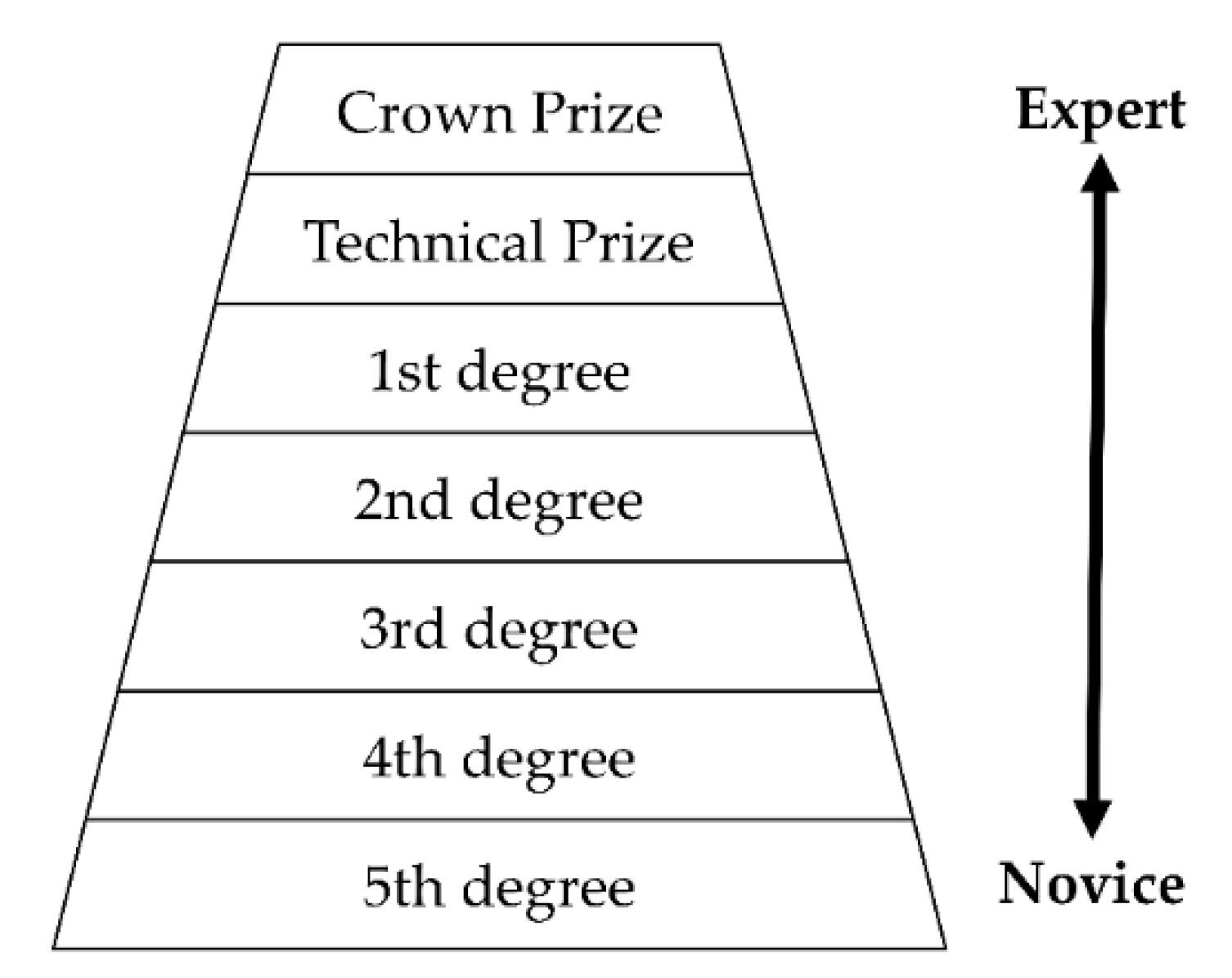
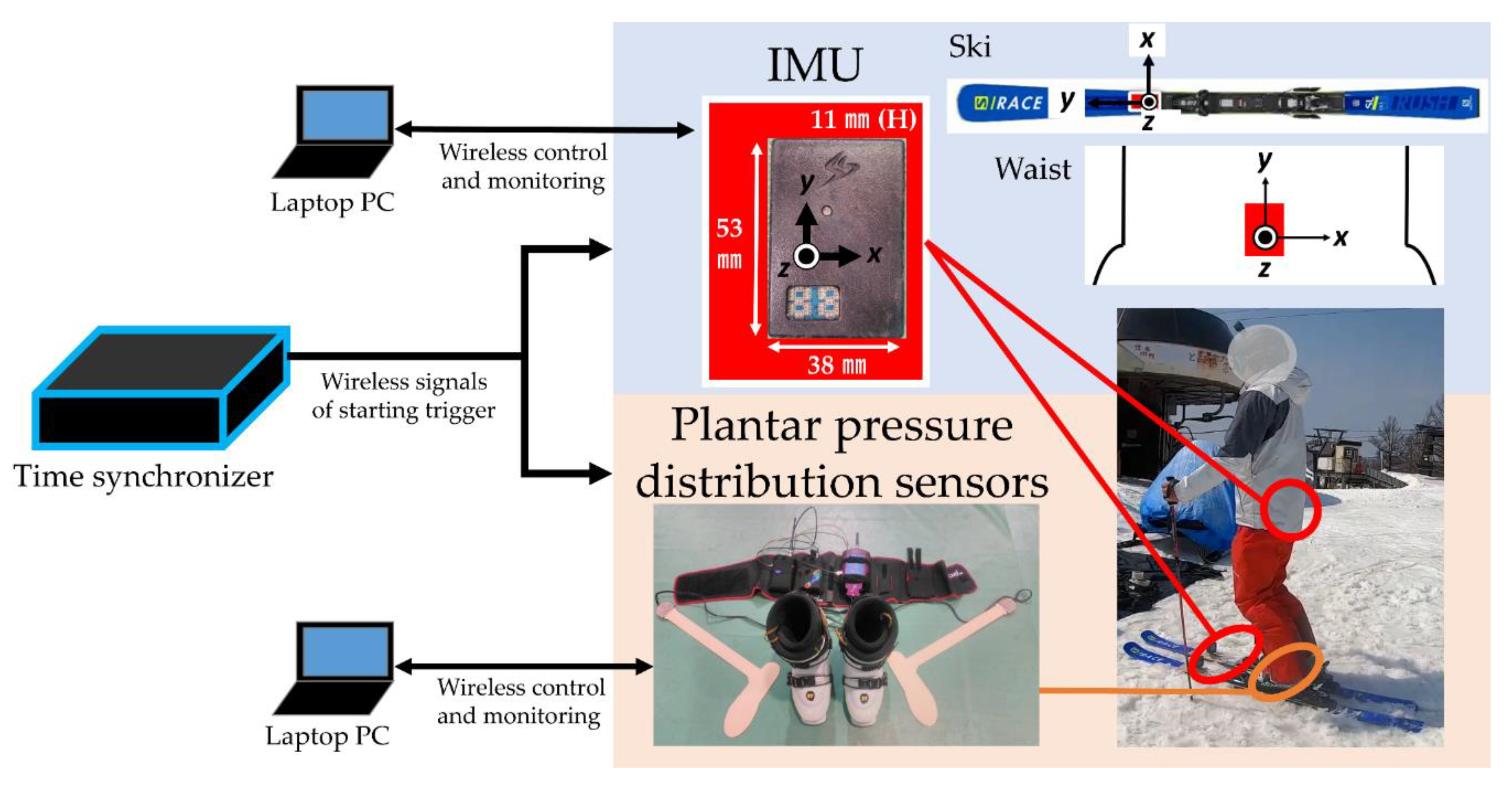
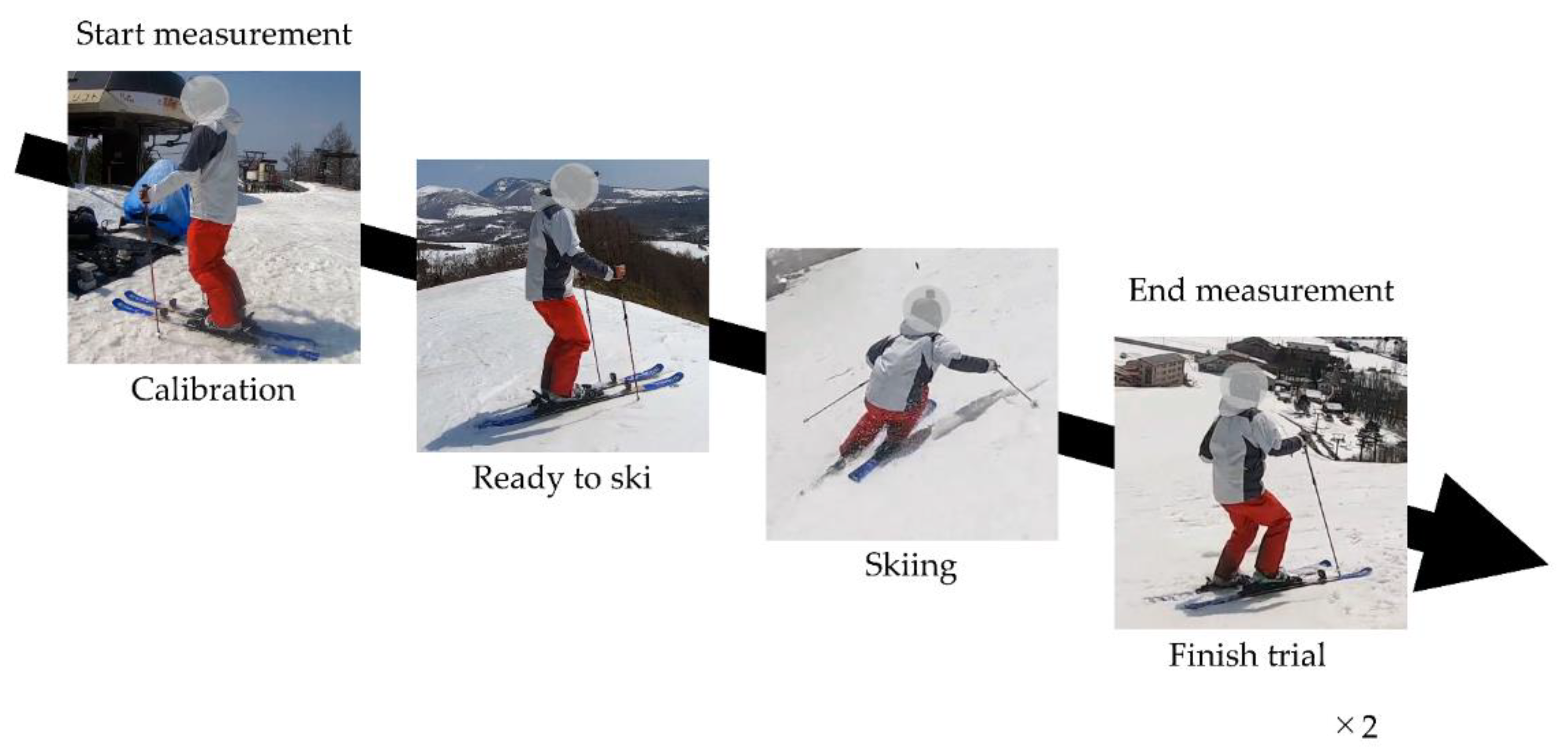


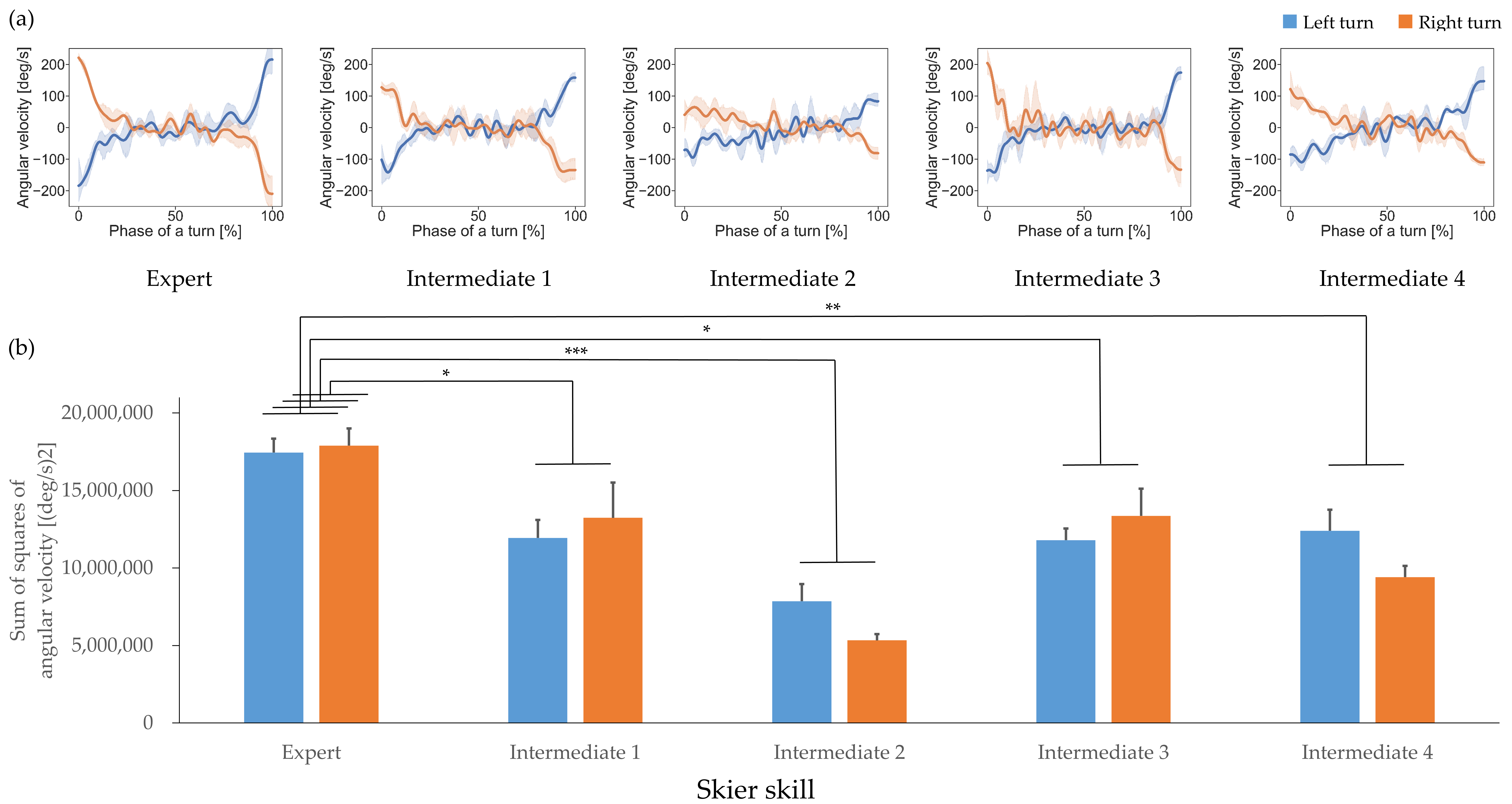
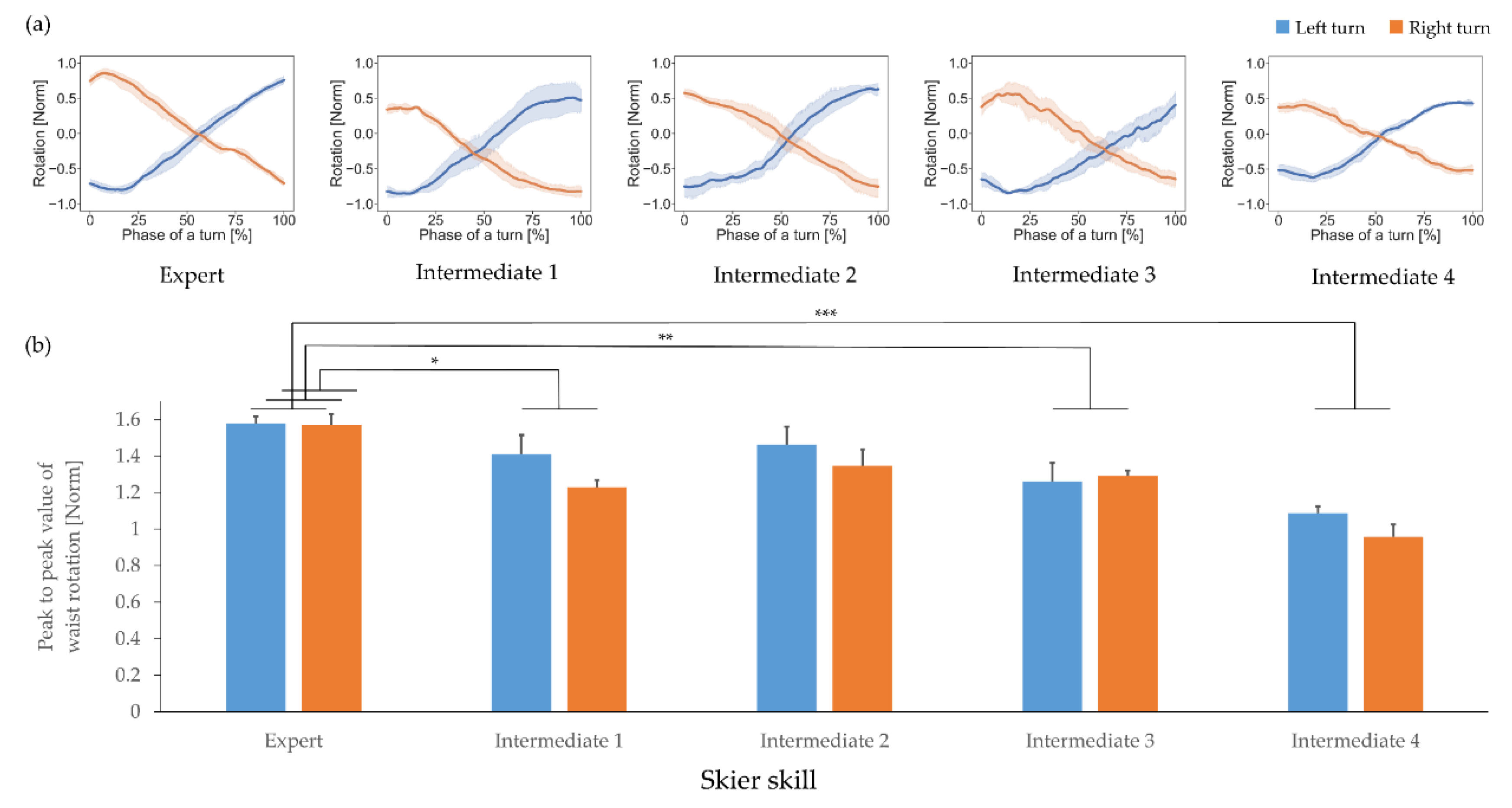
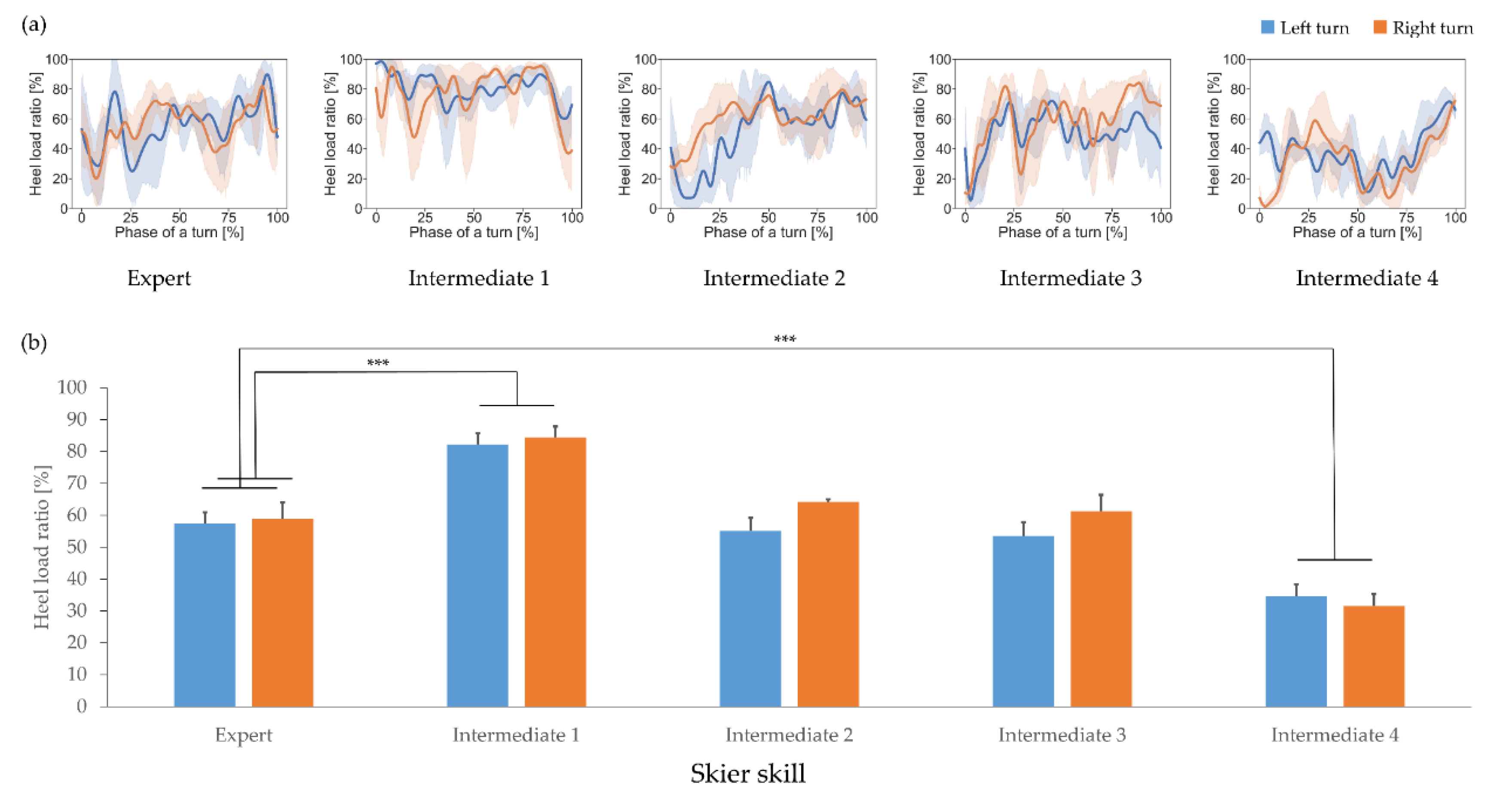
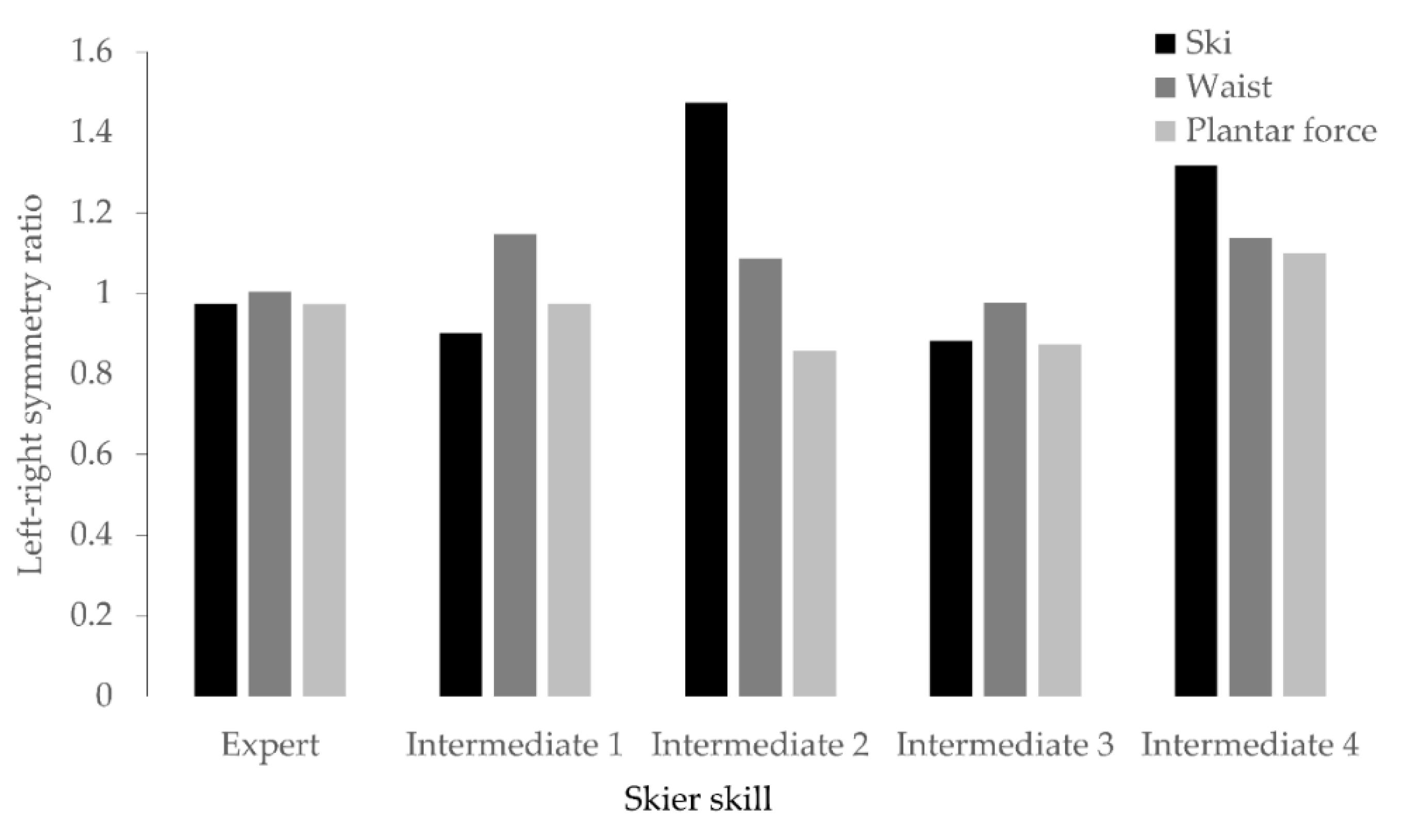
| Skier | t | p | 95% CI | Cohen’s d |
|---|---|---|---|---|
| Intermediate skier 1 | 3.580 | 0.016 * | 4.170 × 105, 9.752 × 106 | 0.800 |
| Intermediate skier 2 | 7.797 | <0.001 *** | 6.408 × 106, 1.574 × 107 | 1.744 |
| Intermediate skier 3 | 3.586 | 0.016 * | 4.264 × 105, 9.761 × 106 | 0.802 |
| Intermediate skier 4 | 4.761 | 0.002 ** | 2.096 × 106, 1.143 × 107 | 1.065 |
| Skier | t | p | 95% CI | Cohen’s d |
|---|---|---|---|---|
| Intermediate skier 1 | 3.398 | 0.024 * | 0.008, 0.505 | 0.760 |
| Intermediate skier 2 | 2.255 | 0.158 | −0.078, 0.419 | 0.504 |
| Intermediate skier 3 | 3.963 | 0.010 ** | 0.051, 0.548 | 0.886 |
| Intermediate skier 4 | 7.317 | <0.001 *** | 0.305, 0.801 | 1.636 |
| Skier | t | p | 95% CI | Cohen’s d |
|---|---|---|---|---|
| Intermediate skier 1 | −6.543 | <0.001 *** | −37.771, −12.517 | −1.463 |
| Intermediate skier 2 | −0.385 | 1.000 | −14.108, 11.147 | −0.086 |
| Intermediate skier 3 | 0.192 | 1.000 | −11.890, 13.365 | 0.043 |
| Intermediate skier 4 | 6.514 | <0.001 *** | 12.402, 37.657 | 1.456 |
Publisher’s Note: MDPI stays neutral with regard to jurisdictional claims in published maps and institutional affiliations. |
© 2021 by the authors. Licensee MDPI, Basel, Switzerland. This article is an open access article distributed under the terms and conditions of the Creative Commons Attribution (CC BY) license (http://creativecommons.org/licenses/by/4.0/).
Share and Cite
Matsumura, S.; Ohta, K.; Yamamoto, S.-i.; Koike, Y.; Kimura, T. Comfortable and Convenient Turning Skill Assessment for Alpine Skiers Using IMU and Plantar Pressure Distribution Sensors. Sensors 2021, 21, 834. https://doi.org/10.3390/s21030834
Matsumura S, Ohta K, Yamamoto S-i, Koike Y, Kimura T. Comfortable and Convenient Turning Skill Assessment for Alpine Skiers Using IMU and Plantar Pressure Distribution Sensors. Sensors. 2021; 21(3):834. https://doi.org/10.3390/s21030834
Chicago/Turabian StyleMatsumura, Seiji, Ken Ohta, Shin-ichiroh Yamamoto, Yasuharu Koike, and Toshitaka Kimura. 2021. "Comfortable and Convenient Turning Skill Assessment for Alpine Skiers Using IMU and Plantar Pressure Distribution Sensors" Sensors 21, no. 3: 834. https://doi.org/10.3390/s21030834
APA StyleMatsumura, S., Ohta, K., Yamamoto, S.-i., Koike, Y., & Kimura, T. (2021). Comfortable and Convenient Turning Skill Assessment for Alpine Skiers Using IMU and Plantar Pressure Distribution Sensors. Sensors, 21(3), 834. https://doi.org/10.3390/s21030834





